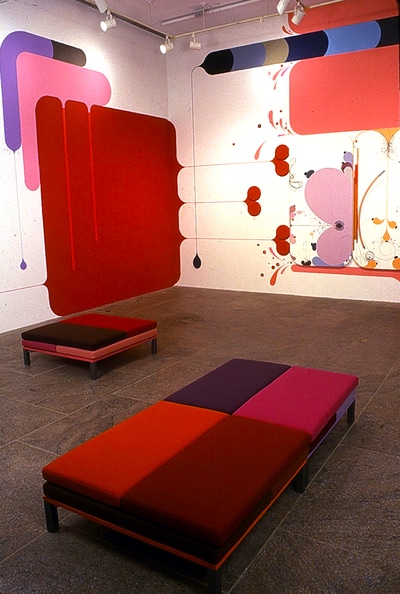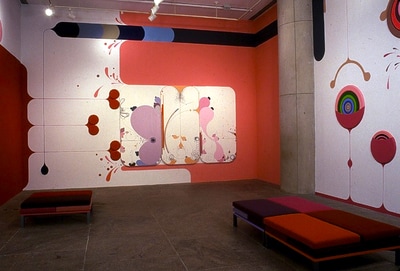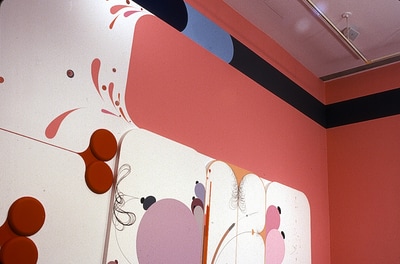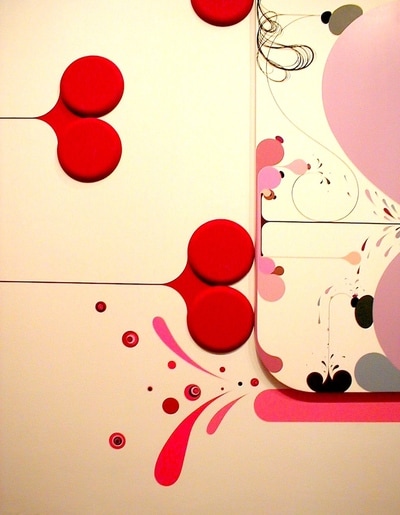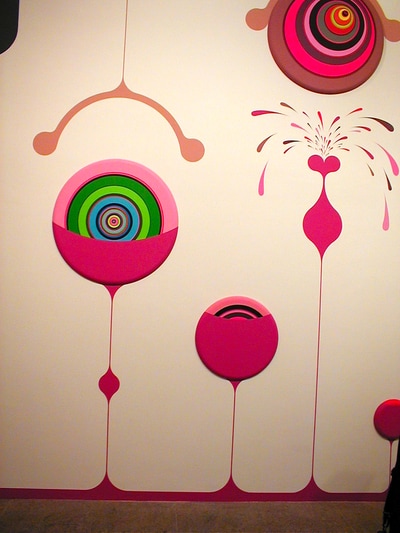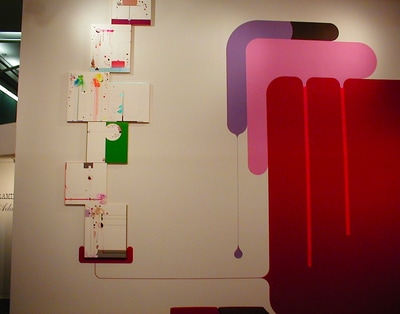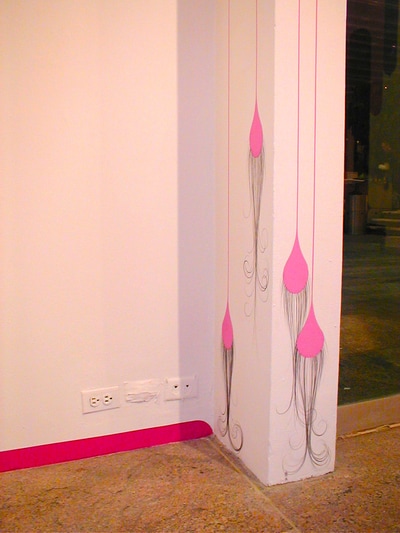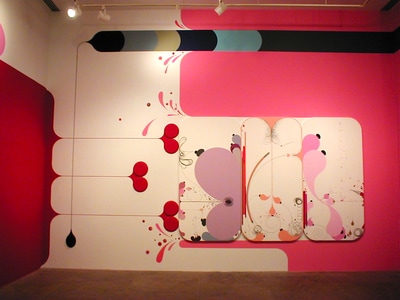Space Addiction
Whitney Museum of American Art at Philip Morris, 2002
Space Addiction at the Whitney Museum of American Art at Philip Morris, 2002
Whitney Museum of American Art at Philip Morris
120 Park Avenue, at 42nd Street
The New York Times Paul Henry Ramirez — ‘Space Addiction’
Sept, 2002, by KEN JOHNSON
If Austin Powers were an artist, he might do something like the work of Paul Henry Ramirez. In flat, hard-edged graphics reminiscent of the Pop and Color Field painting of the 1960’s, Mr. Ramirez creates zany montages of semi-abstracted body parts — spurting breasts, delicately hair-fringed orifices, dangling genitalia — and fully abstract elements, like targets, polka-dots, stripes and single-hued planes. In shades of pink and other tones suggesting skin, as well as bright whites and suave, slightly toned-down decorator colors, Mr. Ramirez’s fertile imagery proliferates all over the walls, turning a room into a visionary, wrap-around environment of erotic animation.
Here at the Whitney’s Philip Morris gallery, he has expanded into aural space, providing a soundtrack of quirky, computerized sound effects. He has also gone into three dimensions with coolly modernistic cushioned benches upholstered in colors that match the wall painting.
For all its surface pizzazz, Mr. Ramirez’s art has intriguing conceptual implications. It satirizes the utopian fantasies of mid-20th-century design and suggests, with all the lactating mammary imagery, that the impulse to create environments of holistic harmony may be driven less by formalist rationality than by infantile yearning for the ideally nurturing mother.
In the Philip Morris Sculpture Court, an exhibition titled ‘’Outer City, Inner Space’’ offers three large-scale projects that resonate with Mr. Ramirez’s Neo-Pop lunacy.
Whitney Museum of American Art at Philip Morris
120 Park Avenue, at 42nd Street
The New York Times Paul Henry Ramirez — ‘Space Addiction’
Sept, 2002, by KEN JOHNSON
If Austin Powers were an artist, he might do something like the work of Paul Henry Ramirez. In flat, hard-edged graphics reminiscent of the Pop and Color Field painting of the 1960’s, Mr. Ramirez creates zany montages of semi-abstracted body parts — spurting breasts, delicately hair-fringed orifices, dangling genitalia — and fully abstract elements, like targets, polka-dots, stripes and single-hued planes. In shades of pink and other tones suggesting skin, as well as bright whites and suave, slightly toned-down decorator colors, Mr. Ramirez’s fertile imagery proliferates all over the walls, turning a room into a visionary, wrap-around environment of erotic animation.
Here at the Whitney’s Philip Morris gallery, he has expanded into aural space, providing a soundtrack of quirky, computerized sound effects. He has also gone into three dimensions with coolly modernistic cushioned benches upholstered in colors that match the wall painting.
For all its surface pizzazz, Mr. Ramirez’s art has intriguing conceptual implications. It satirizes the utopian fantasies of mid-20th-century design and suggests, with all the lactating mammary imagery, that the impulse to create environments of holistic harmony may be driven less by formalist rationality than by infantile yearning for the ideally nurturing mother.
In the Philip Morris Sculpture Court, an exhibition titled ‘’Outer City, Inner Space’’ offers three large-scale projects that resonate with Mr. Ramirez’s Neo-Pop lunacy.
